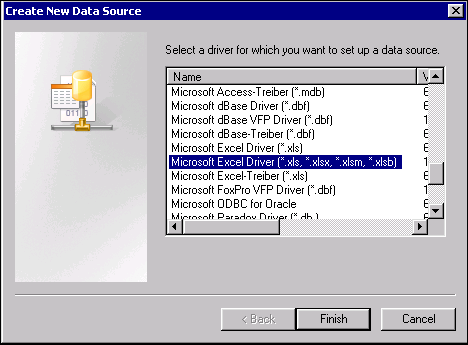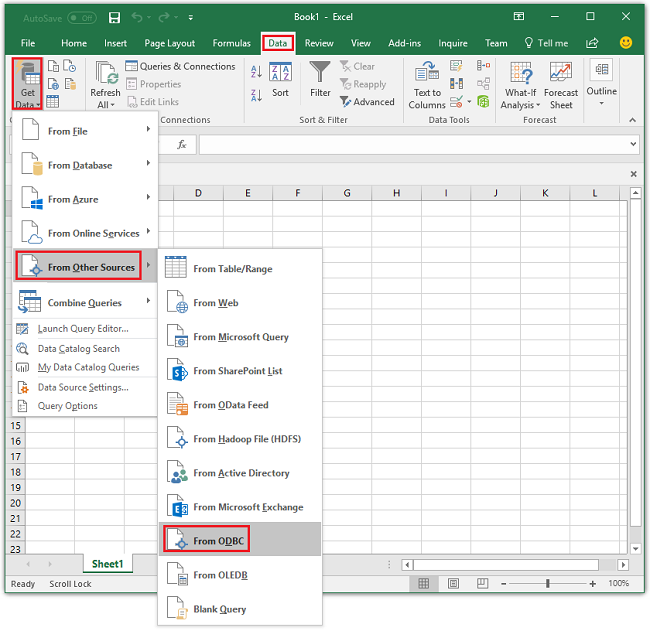
Select View, and then select Refresh from the main menu.
#ODBC EXCEL FILE DRIVER#
A setup dialog displays for the selected driver (connection type). Select the appropriate driver for your version of Excel, as shown in the following display.

Select the type of connection that you want to establish.Then select ODBC Connection to display the ODBC Data Source Administrator dialog. Select the New Data Connection menu in the Data Connections pane on the right.Click the Data riser on the DataFlux Data Management Studio desktop.Each named range is treated as a separate table in DataFlux Data Management Studio. You can have multiple ranges in the same spreadsheet. Define a named range in Excel that uses both the data and the associated field names. Make sure the row above your data contains field names. Define an appropriate named range in the Excel spreadsheet that you want to access.Perform the following steps to create an ODBC DSN to read named ranges in an Excel spreadsheet: You can then import the CSV file into Excel. You can, however, use a Text File Output node in a data job to write output in CSV format.

Note: You cannot use a DSN to write output to Excel format. The next display shows a DSN connection for the Excel file above. Each Excel file can have multiple named ranges (tables). You can use ODBC DSN connections to read named ranges in an Excel spreadsheet. For example, the next display shows two named ranges. You are here: Data Riser Bar > Working with Data Connections > Adding ODBC Connections for ExcelĭataFlux Data Management Studio 2.6: User Guide Adding ODBC Connections for ExcelĪ named range is a set of columns and rows that have a unique name within an Excel file.


 0 kommentar(er)
0 kommentar(er)
